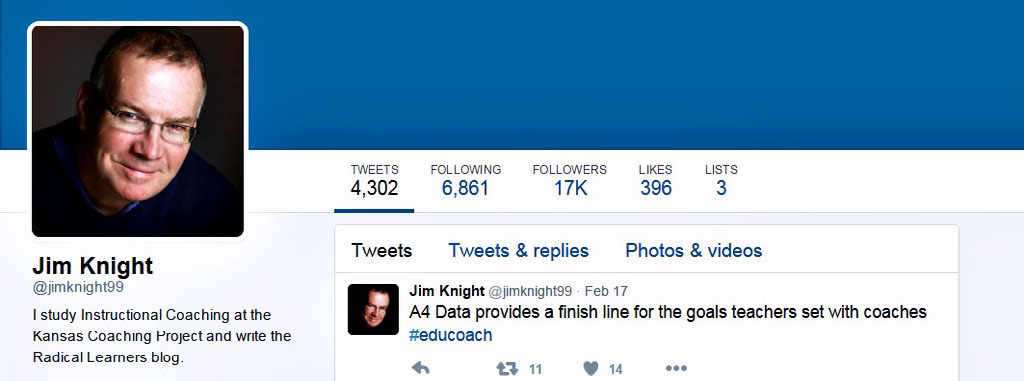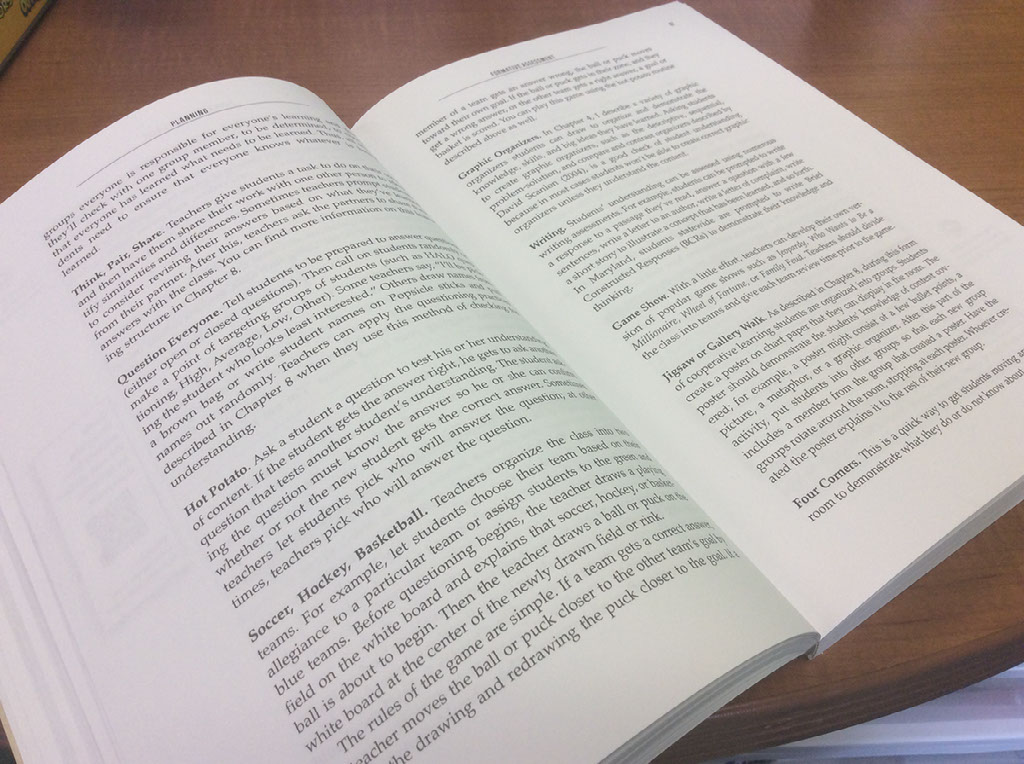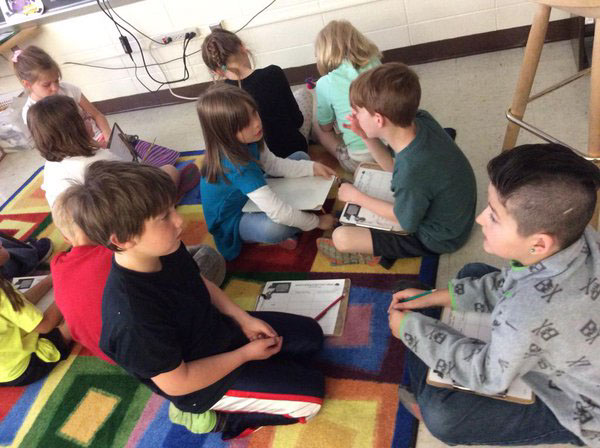High Impact Instruction Book Review
Participants: Alex Baker, Alycen Fiegel, Andrea Marsh, Bryson Travis, Debbie Swope, Emily Akers, Jackie Albertson, Jennifer Kilgore, Matt Perkins, Olivia Hockemeier and Victoria Hill
Elkhorn Elementary conducted a two month book study on Jim Knight's "High Impact Instruction". Participants of the book club were challenged with reading, responding, and adjusting practice based on the new information.

We focused on sections of the book dealing with lesson design, formative assessment, and instructional strategies (Thinking prompts, effective questioning, stories, cooperative learning strategies, and authentic learning strategies).
High Impact Lesson Design

Jim Knight divides the lesson planning process into three essential components. To be successful teachers must design essential questions, quality assessments, and concept maps. During our debrief of this chapter several people had Jim's ideas resonate with them.
"This section reminded me to consider what essential information we are teaching in a lesson. It is important to think about what the students will be taking with them 5-10 years in the future." - Alex Baker (Elkhorn Art Teacher)
"The idea of concept mapping resonated with me. I love seeing the big picture and figuring out what the students need to know and how deep we need to dig into the content." - Jackie Albertson (Third Grade Teacher)
"Jim Knight's lesson design was a great refresher in essential questions. It reminded me the value of keeping the essential questions in mind so we know what are the most important objectives and what are the most efficient way to get through them." - Andrea Marsh (Second Grade Teacher)
High Impact Formative Assessment

High Impact Instruction focuses on the importance of quality formative assessment with timely feedback. The book provides the essentials of high-quality formative assessment and many examples of it. Elkhorn's book study reflected on the many different ways to formatively assess students.
"This section gave me some powerful examples of formative assessment. At fifth grade the students have used the same formative assessment for years. I have already changed my practice to include the 'Hot Potato" formative assessment and have seen wonderful results! I can't wait to put in even more formative variety to keep my students engaged!" - Alycen Fiegel (Fifth Grade Teacher)
"Now that we’ve [Elkhorn] had the Making Meaning PD, I feel more confident in my ability to assess through conferring individually with students rather than thinking of relying on paper/pencil assessments. As I've applied it so far, I can hear and see my students thinking critically." - Emily Akers (Third Grade Teacher)
"Why do we wait until the end of our lesson for our best review activities? By integrating quick Jeopardy games, scavenger hunts, and other review activities [things we already do] into our formative assessments we can create significantly more engaging assessments and get timely data that can change our instruction to fit each students needs." - Bryson Travis (Instructional Coach)

The group discussed how to utilize the districts technology resources to get high-quality formative assessments. Resources discussed included Google Classrooms, Kahoot, Socrative, Plickers, Prodigy, and built in iPad applications like quick videos or notes.
High Impact Instructional Practices

High Impact Instruction develops teachers instructional strategies with a myriad of impactful teaching techniques. The group focused on cooperative learning, effective questioning, use of teacher anecdotes and stories, and authentic learning opportunities.
"This section reminded me of the power of stories in the classroom. Not simply positive stories. The teacher's stories about struggle, perseverance, and overcoming difficulty can be particularly powerful in special education. It lets the student know that they are not alone in their academic struggles." - Debbie Swope (Special Education Teacher)
"I appreciate Jim's focus on differentiated groups in cooperative learning. In physical education for example, balancing individual student's experience with the activities, athletic level, and team skills are critical to getting the most out of cooperative learning groups. The best tennis player in my class is rarely the best athlete, but they both have something to teach each other. Differentiated groups make that possible." - Matt Perkins (Elkhorn PE Teacher)
"The essential elements of effective questioning have dramatically changed my classroom practices . Asking challenging questions, rephrasing them for clarity, and reducing question length for struggling learners are [now] critical components for every question I ask my students." - Olivia Hockemeier (Fifth Grade Teacher)
"Planning, delivery method, assessments... Cooperative learning has had the single greatest impact in how I teach. This high-yield strategy maximizes classroom engagement and builds confidence in students of all ability levels." - Victoria Hill (Elkhorn Music Teacher)